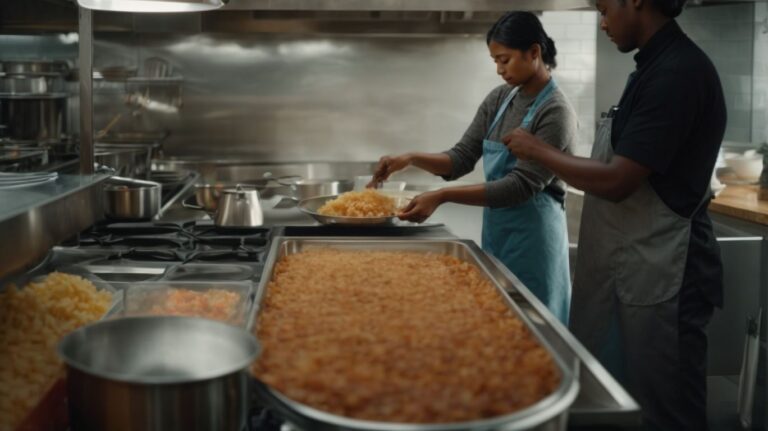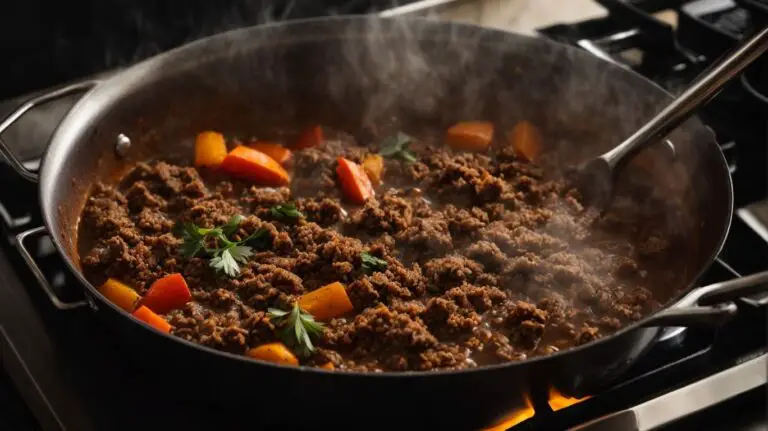How to Cook Vegetables After Blanching?
Are you looking to elevate your vegetable cooking game?
We will explore the technique of blanching and why it is essential before cooking your veggies.
From preparing the vegetables to blanching them and then cooking them through methods like sautéing, steaming, and roasting, we will cover it all.
Discover the benefits of cooking vegetables after blanching, such as retaining nutrients and enhancing flavor.
Learn which vegetables are best suited for this cooking method and get cooking!
Key Takeaways:
What Is Blanching?
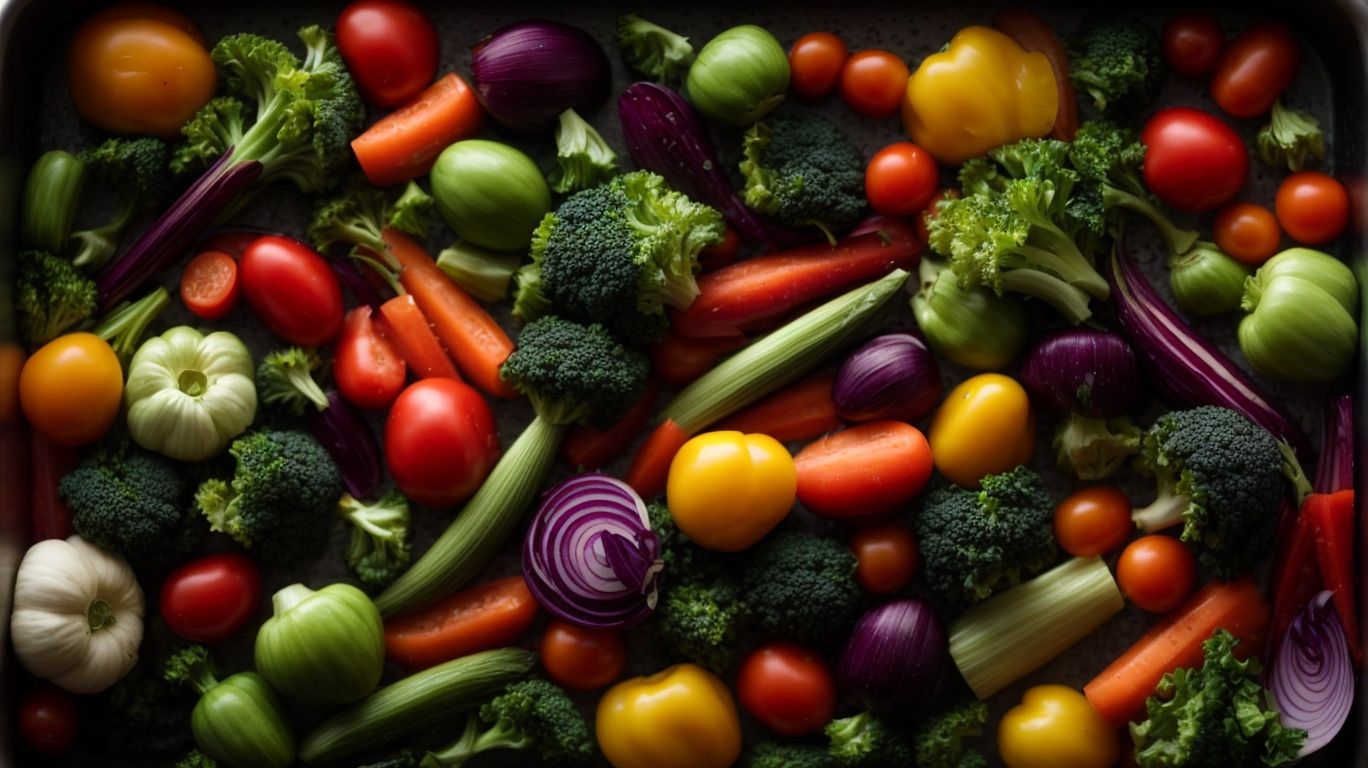
Credits: Poormet.Com – Benjamin Roberts
Blanching is a culinary technique that involves briefly immersing vegetables in boiling water followed by an immediate plunge into ice water.
This process, which is often used before freezing or preserving vegetables, serves multiple purposes in cooking. Blanching helps to partially cook the vegetables, which can be beneficial for dishes that require shorter cooking times or for preserving the crispness of vegetables. Blanching also helps to halt enzymatic activity that can cause vegetables to lose their color, texture, and nutrients over time.
Why Should You Blanch Vegetables Before Cooking?
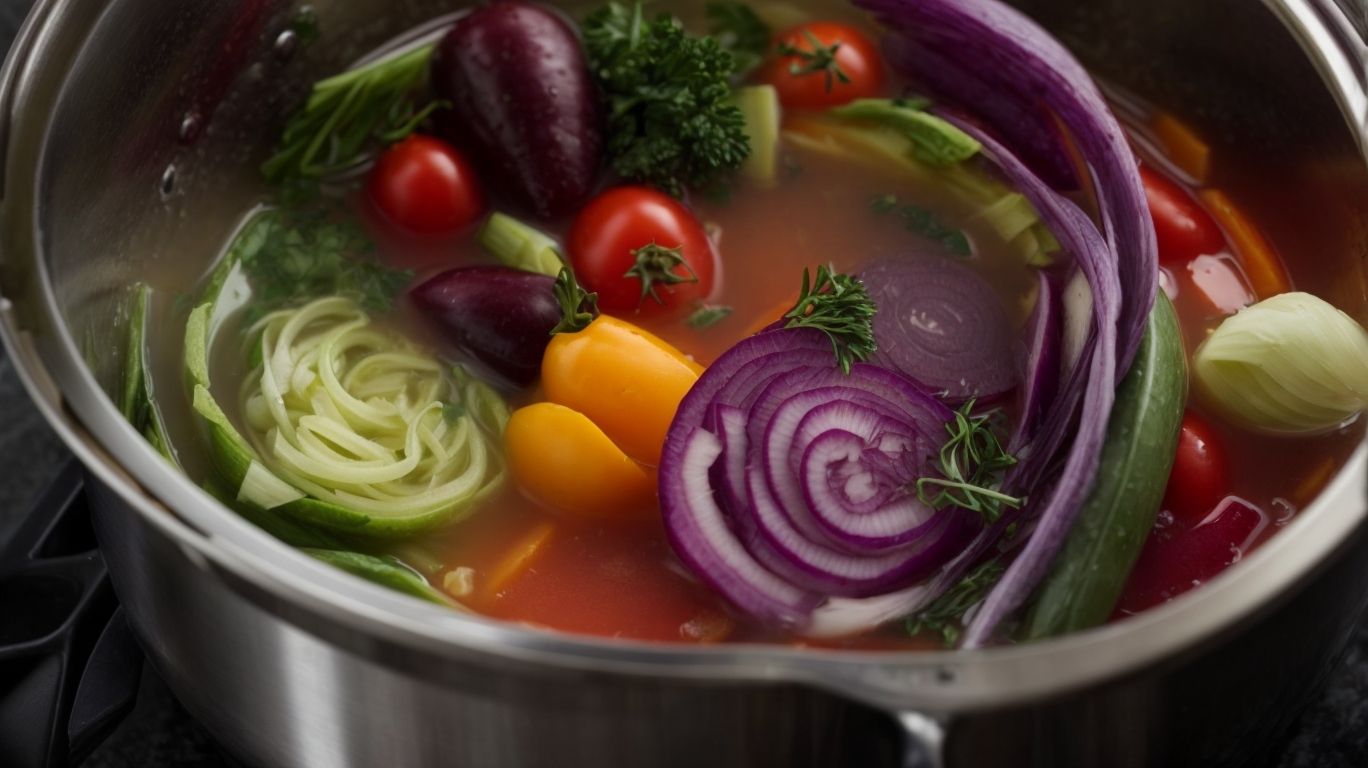
Credits: Poormet.Com – Michael Wright
Blanching vegetables before cooking helps retain nutrients, preserves freshness, enhances color and texture, and prepares them for various cooking methods.
By briefly immersing vegetables in boiling water, blanching slows down enzyme activity that causes loss of nutrients, maintaining their nutritional value. This process also brightens the color of vegetables, making them visually appealing. Blanching helps to soften the texture of veggies like broccoli and carrots, making them more palatable when cooked further. Whether you’re planning to sauté, stir-fry, or freeze vegetables, blanching is a crucial step that impacts their taste and appearance significantly.
How to Blanch Vegetables?
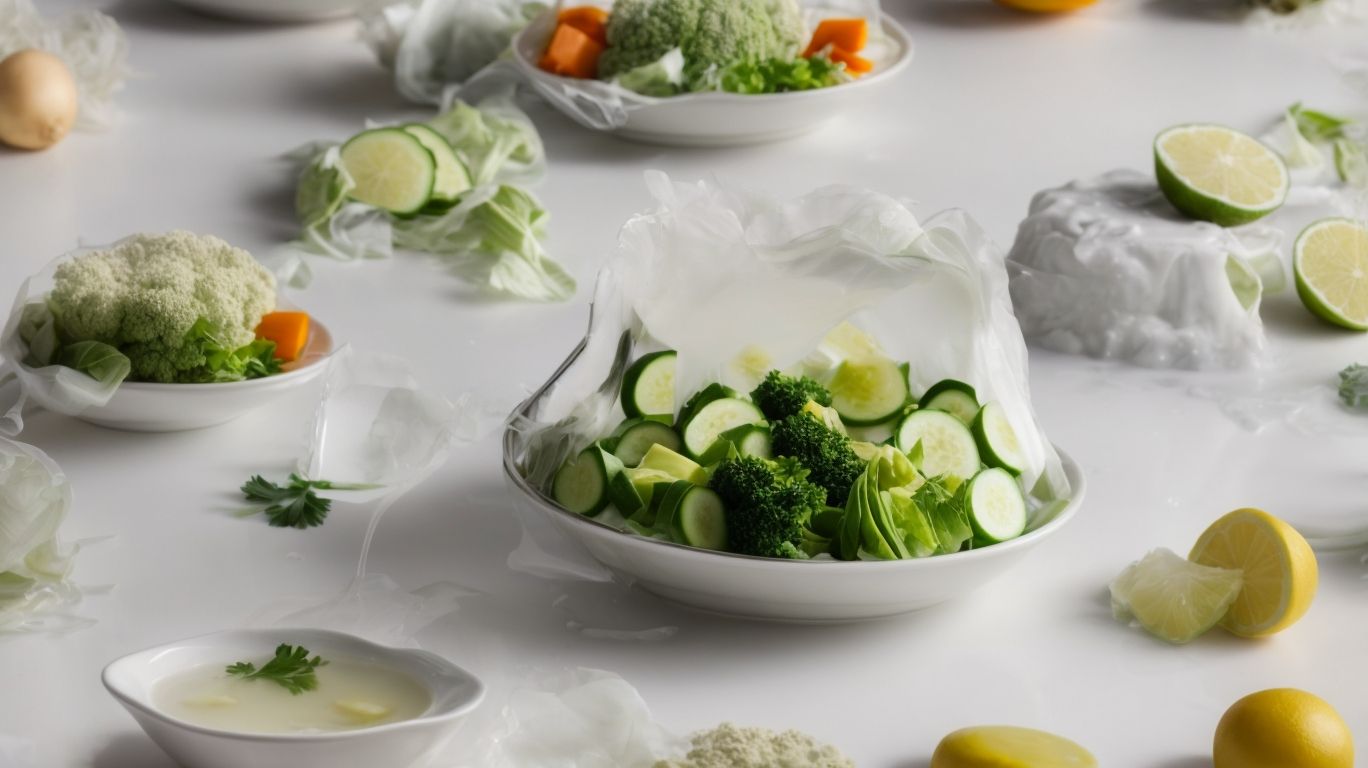
Credits: Poormet.Com – Andrew White
To blanch vegetables, start by boiling water, prepare an ice bath, follow precise instructions for timing and technique, and ensure proper cooling in ice water.
Preparing the boiling water is the initial step in blanching vegetables. Use a large pot and fill it with water, ensuring there’s enough water to fully submerge the vegetables. Add a pinch of salt to enhance flavor. Once the water reaches a rolling boil, it’s ready for blanching. For the ice bath, fill a large bowl with ice cubes and water to create a cold environment for the blanched vegetables. Follow specific instructions for each vegetable type, as timings may vary based on their density and size. The blanching technique involves quickly submerging the vegetables in boiling water for a brief period, usually between 1-3 minutes, depending on the vegetable. Transfer them immediately to the ice bath to halt the cooking process and preserve color and nutrients.
Prepare the Vegetables
Before blanching, ensure vegetables are cut into uniform pieces, stored in an airtight container with a damp paper towel to maintain freshness.
Uniform vegetable pieces are crucial for ensuring that all components of the dish are cooked evenly during the blanching process. If the pieces vary in size, smaller portions may overcook while larger ones remain underdone. This consistency in size allows for a uniform cooking time and texture.
To preserve the freshness of the vegetables, refrigerate them promptly after cutting. Placing the vegetables in an airtight container with a damp paper towel helps to maintain their crispness and prevents wilting. The moisture from the paper towel keeps the vegetables hydrated without making them soggy.
Boil Water in a Pot
Bring a pot of water to a rolling boil, add salt for seasoning, and note the recommended blanching time for different types of vegetables.
When blanching vegetables, the addition of salt not only seasons the vegetables but also helps to retain their vibrant colors.
Remember, the blanching time can vary depending on the texture and density of the vegetable.
For softer vegetables like spinach or peas, a quick blanching time of 1-2 minutes is sufficient to soften them slightly while still maintaining a crisp texture.
On the other hand, denser vegetables such as carrots or broccoli may require a blanching time of 3-4 minutes to achieve the desired tenderness without overcooking.
Blanch the Vegetables
Immerse the prepared vegetables in boiling water to partially cook them, ensuring the desired texture and preserving vibrant color.
When blanching vegetables, it is crucial to only keep them in the boiling water for a short period, typically ranging from 1-5 minutes, depending on the type of vegetable. This quick cooking process results in the vegetables becoming tender yet firm, also known as achieving the ideal texture, making them perfect for further preparation in various dishes.
Blanching helps to lock in the color and freshness of vegetables by halting enzyme actions that cause discoloration and nutrient loss. The blanching process essentially sets the vibrant colors of the vegetables, making them visually appealing and appetizing in salads, stir-fries, and other culinary creations.
Shock the Vegetables in Ice Water
After blanching, transfer the vegetables to an ice water bath to halt the cooking process and retain a crisp-tender texture, following specific instructions for this step.
This sudden temperature change helps to set the bright color of the vegetables while also preventing them from overcooking, maintaining their vibrant appearance and nutritional value.
- To shock the vegetables effectively, have a large bowl filled with ice water ready beforehand.
- Once the blanching time is complete, use a slotted spoon to swiftly transfer the vegetables from the boiling water to the ice water bath.
- Ensure the vegetables are fully submerged in the cold water to rapidly cool them down.
- Let them sit for about 1-2 minutes until they are completely cooled.
How to Cook Vegetables After Blanching?
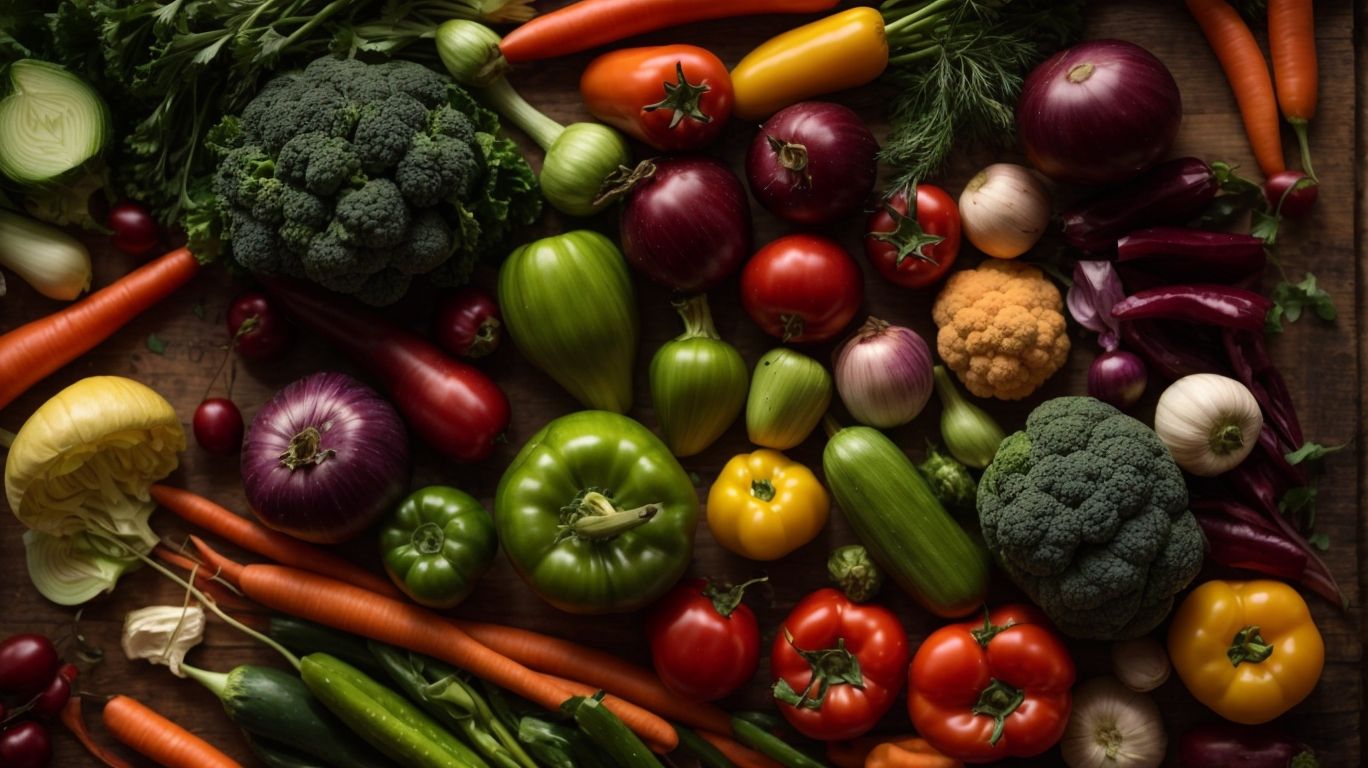
Credits: Poormet.Com – Thomas Williams
Once vegetables are blanched, they can be cooked through various methods like sautéing, steaming, roasting, grilling, or stir-frying.
Each cooking method offers a unique way to enhance the flavors and textures of the blanched vegetables.
- Sautéing involves quickly cooking the vegetables in a hot pan with oil or butter, providing a delicious caramelized exterior.
- Steaming is a gentle cooking process that helps retain the vegetables’ nutrients and vibrant colors.
- Roasting in the oven brings out a deep, rich flavor by caramelizing the natural sugars in the vegetables.
- Grilling imparts a smoky charred taste, perfect for summer veggies.
- Lastly, stir-frying in a hot wok allows for quick cooking while maintaining the veggies’ crispiness and preserving their natural flavors.
Sautéing
Sautéing blanched vegetables involves using a hot sauté pan, following specific instructions to achieve the desired flavor and texture.
Ensure your sauté pan is preheated over medium-high heat. Add a touch of olive oil or butter for flavor. Next, gently place the blanched vegetables in the pan, ensuring they are spread out evenly to allow for proper cooking.
It’s essential to keep the vegetables moving in the pan by using a spatula or tongs to prevent sticking or burning. The sautéing process typically takes about 5-7 minutes, depending on the thickness of the vegetables.
Season the vegetables with salt, pepper, and any desired herbs or spices during the cooking process to enhance the overall flavor profile.
Steaming
Steaming blanched vegetables helps retain nutrients and flavor, requiring precise timing to achieve the desired tenderness.
When steaming blanched vegetables, it’s important to ensure you don’t overcook them as this could lead to a loss of essential nutrients. Steaming preserves the vibrant colors and natural flavors of the vegetables, making them not only delicious but visually appealing as well.
To steam blanched vegetables effectively, place them in a steamer basket over boiling water and cover with a lid to trap the steam. The steaming time varies depending on the vegetable, but a general guideline is to steam for about 3-5 minutes until they are just tender when pierced with a fork.
Roasting
Roasting blanched vegetables in the oven enhances their natural flavors and can introduce caramelized notes, providing a delicious twist to the dish.
When preparing blanched vegetables for roasting, ensure they are thoroughly dried to promote browning and avoid steaming. Spread them out evenly on a baking sheet to allow for even cooking and crispy edges. You can elevate the flavors further by drizzling with olive oil, sprinkling with herbs, or adding a touch of balsamic vinegar before roasting. Roasting at a high temperature (around 400-425°F) is ideal for achieving that perfect balance of tenderness and crispiness. Remember to toss the veggies halfway through cooking for uniform caramelization.
Grilling
Grilling blanched vegetables imparts a smoky flavor and charred texture, elevating the taste profile with unique grilled notes.
Blanching the vegetables before grilling ensures that they are cooked through while still maintaining their crunch, making them perfect for the smoky infusion during the grilling process. This method also helps to shorten the grilling time, preventing overcooking and preserving the vegetables’ nutrients and vibrant colors.
To achieve the ideal grilled vegetables, make sure to preheat the grill adequately, brush the veggies with olive oil to prevent sticking, and season generously with herbs and spices for added depth of flavor.
Stir-frying
Stir-frying blanched vegetables in a hot pan with flavorful ingredients creates quick and delicious dishes with vibrant textures and flavors.
When stir-frying blanched veggies, be sure to have all your ingredients prepped and ready to go as the cooking process is fast-paced. A key tip is to heat the pan well before adding oil and vegetables to achieve that characteristic sizzling sound and quick cooking. For flavor, you can combine garlic, ginger, and soy sauce for an umami-rich base, or opt for a spicy kick with chili paste and sesame oil.
Remember to keep the veggies moving in the pan to prevent burning and ensure even cooking. Pairing softer vegetables like bell peppers with crunchier ones such as broccoli can create a satisfying contrast in texture. A sprinkle of sesame seeds or chopped nuts at the end can add a delightful crunch and extra depth of flavor to your stir-fry.
What Are the Benefits of Cooking Vegetables After Blanching?
Cooking vegetables after blanching them helps retain nutrients, enhances flavor, improves texture, and ensures a shorter cooking time.
When you blanch vegetables before cooking them, you partially cook them in boiling water and then rapidly cool them in ice water, which halts the cooking process and locks in the nutrients.
This method not only preserves the essential vitamins and minerals of the vegetables but also brings out their natural colors and flavors, making your dishes more vibrant and tasty.
Blanching also softens the cell walls of vegetables, resulting in a more tender texture when they are cooked further in your desired dish.
By pre-cooking the vegetables through blanching, you significantly reduce the overall cooking time required for them, making meal preparation more efficient and streamlined.
Retains Nutrients
Cooking blanched vegetables maintains their nutrient content due to the blanching process, ensuring a healthier meal option.
Blanching, which involves briefly immersing vegetables in boiling water and then shocking them in ice-cold water, helps to lock in the nutrients without overcooking them. This method not only preserves the vitamins and minerals within the vegetables but also enhances their color, flavor, and texture.
To further maximize the nutrient retention, it is recommended to store blanched vegetables properly. Storing blanched vegetables in airtight containers in the refrigerator can help maintain their freshness and nutrient levels for an extended period.
Enhances Flavor
Cooking blanched vegetables intensifies their natural flavors and maintains their vibrant colors, resulting in visually appealing and delicious dishes.
When cooking blanched vegetables, the process not only adds depth to their taste but also locks in the nutrients. This method of cooking infuses the vegetables with richness and tenderness, elevating the overall texture and flavor profile of the dish. The vibrant colors of the vegetables not only make the dish visually striking but also indicate a high content of essential nutrients.
To further enhance the flavor, consider using complementary herbs and spices. The addition of ingredients such as garlic, lemon zest, or red pepper flakes can bring out the natural sweetness or tanginess of the vegetables.
Shortens Cooking Time
Cooking blanched vegetables reduces overall cooking time as they are partially pre-cooked during the blanching process, speeding up meal preparation.
This time-saving technique not only expedites the cooking process but also helps in retaining the vegetables’ vibrant colors and nutrients. To ensure perfectly cooked blanched vegetables, it’s essential to be mindful of the optimal cooking times. Overcooking can result in mushy vegetables, leading to a loss of texture and flavor.
Improves Texture
Cooking blanched vegetables results in a desirable texture due to the initial blanching step, ensuring consistent quality even after freezing or storage.
Blanching vegetables before cooking helps to break down enzymes that can cause texture changes during storage. When you cook these blanched veggies, you lock in their natural flavors and firmness, making them ideal for future use. To maintain the texture post-cooking, it’s essential to avoid overcooking and instead opt for methods like stir-frying or sautéing, which preserve the vegetable’s crunchiness.
For freezing blanched vegetables, ensure to cool them properly before packing to prevent ice crystal formation. Vacuum sealing or using airtight containers can also help maintain their texture when stored long-term. Adding a sprinkle of lemon juice or vinegar can aid in preserving their color and texture during freezing.
What Vegetables Are Best Cooked After Blanching?
Broccoli, cauliflower, green beans, carrots, and asparagus are among the top vegetables that benefit from the blanching process before cooking.
Blanching these vegetables helps to preserve their vibrant colors, enhance their texture, and partly cook them to reduce the overall cooking time.
- Broccoli retains its bright green hue and crispness when blanched, making it the perfect addition to salads or stir-fries.
- Cauliflower maintains its firmness and a slight bite with blanching, ideal for roasting or sautéing.
- Green beans maintain their crunch and bright color, suitable for quick sautés or as side dishes.
- Carrots blanched retain their natural sweetness and are great for glazing or steaming.
- Asparagus, when blanched, unlocks its delicate flavor and tender texture, perfect for grilling or tossing into pasta dishes.
Broccoli
Broccoli, when blanched, retains its vibrant green color and crisp texture, making it ideal for various cooking methods.
One of the key advantages of blanching broccoli is the preservation of its vibrant color, which not only makes the dish visually appealing but also indicates the retention of important nutrients. Blanching enhances the broccoli’s texture, ensuring it stays firm and slightly crunchy when cooked.
To blanch broccoli, simply bring a pot of water to a boil, briefly immerse the florets for a few minutes, then transfer them to an ice bath to halt the cooking process. This method is perfect for incorporating broccoli into salads, stir-fries, or even as a side dish.
Cauliflower
Blanched cauliflower maintains its texture and flavor integrity, suitable for freezing, canning, or incorporating into diverse recipes.
Blanching cauliflower not only helps preserve its natural color and nutrients but also makes it more versatile in terms of storing for later use. When you blanch cauliflower, it stops enzyme actions that can cause loss of flavor, color, and texture over time. By blanching before freezing or canning, you can enjoy the benefits of cauliflower long after the harvest season. Blanched cauliflower can be added to various dishes like salads, stir-fries, soups, and casseroles, enhancing their overall taste and nutrition.
Green Beans
Blanched green beans preserve their nutrients and vibrant color, retaining a crisp-tender texture, perfect for salads or side dishes.
The process of blanching involves quickly submerging the green beans in boiling water, then shocking them in ice water to stop the cooking process. This method helps lock in the nutrients, such as vitamins A, C, and K, as well as minerals like potassium and fiber. Consequently, you not only enjoy the delicious flavors of the beans but also benefit from their nutritional value.
Blanching green beans helps preserve their beautiful green hue, making your salads or side dishes visually appealing. The vibrant color adds an attractive element to your culinary creations, enticing both the eyes and taste buds of those indulging in the dish.
Carrots
Blanched carrots benefit from a brief dip in boiling water, enhancing their texture and flavor for a variety of culinary applications.
This simple technique not only helps in retaining the vibrant color of carrots but also makes them slightly tender without sacrificing their crunchiness. By blanching carrots, you can also remove any dirt or impurities, ensuring a cleaner and fresher taste. Parboiling the carrots before using them in dishes like salads, stir-fries, or soups can speed up cooking time and make them more versatile in recipes. The blanched carrots serve as perfect additions to pasta dishes, vegetable medleys, or as healthy snack options when paired with dips.
Asparagus
Asparagus, when blanched properly, maintains its delicate flavor profile and crisp texture, suitable for grilling, roasting, or using in salads.
Blanching asparagus not only helps to retain its vibrant green color but also reduces its bitterness, making it more palatable for a wide range of dishes. The blanching process involves briefly cooking the asparagus in boiling water and then immediately submerging it in ice water to halt the cooking process. This method also helps to partially cook the asparagus, ensuring that it remains tender yet slightly crisp when used in various recipes.
Once blanched, the asparagus can be grilled to enhance its natural sweetness and add a smoky charred flavor. Alternatively, roasting the blanched asparagus with olive oil, garlic, and a sprinkle of Parmesan cheese creates a delicious side dish or topping for pasta. For a lighter option, incorporating blanched asparagus into salads adds a crunchy texture and fresh taste, perfect for summer meals.
Frequently Asked Questions
How to Cook Vegetables After Blanching?
FAWhat is blanching and why is it important before cooking vegetables?
Blanching is a cooking technique where vegetables are briefly boiled in hot water and then immediately plunged into ice water to stop the cooking process. This helps to preserve the color, flavor, and texture of the vegetables.
How to Cook Vegetables After Blanching?
FACan I use the blanching water to cook the vegetables?
Yes, the blanching water can be used as a broth or added to soups and stews for extra flavor. Just make sure to strain the water before using it.
How to Cook Vegetables After Blanching?
FAHow long should I boil the vegetables during the blanching process?
The time varies depending on the type of vegetable, but generally it only takes 1-2 minutes. It’s important to not overcook the vegetables during blanching to avoid them becoming too soft.
How to Cook Vegetables After Blanching?
FADo I need to blanch all vegetables before cooking them?
No, not all vegetables require blanching. Tougher or more fibrous vegetables, such as broccoli, asparagus, and green beans, benefit from blanching. Softer vegetables, like leafy greens, don’t need to be blanched.
How to Cook Vegetables After Blanching?
FAShould I shock the vegetables in ice water after blanching?
Yes, it’s important to immediately shock the vegetables in ice water after blanching to stop the cooking process. This helps to preserve the color, flavor, and texture of the vegetables.
How to Cook Vegetables After Blanching?
FACan I blanch vegetables ahead of time and store them for later use?
Yes, blanched vegetables can be stored in an airtight container in the fridge for a few days or in the freezer for a few months. Just make sure to blanch them for an extra minute before using them in a recipe.


